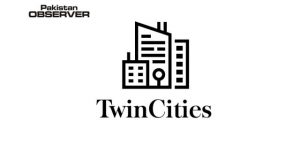Zubair Qureshi
In Pakistan, 19 percent children remained out of school in 2021 while 40 percent of government and 23 percent of private schools imparted multi-grade teaching till grade 8.
As per the report, 81 percent children were enrolled in government schools whereas 19 percent were going to non-state institutions, 1 percent in Madrassah.
The share of private schools has been dropped by 4 percent as compared with year 2019. The report highlights that whilst children in private schools taking tuition has remained at the same level 22 percent as in 2019, paid coaching has recorded a massive jump for children in government schools from 6 percent in 2019 to 20 percent in 2021 Increase in tuition in government schools by 14 percent during COVID-19 is a burden on poor households.
This enrolment edge in government schools poses new challenges for supply side actions in terms of facilities and more spaces and teachers for children who can be accommodated, attend and learn above all in public sector as their fundamental entitlement. The report was based on citizen-led household survey. The Idara-e-Taleem-o-Aagahi (ITA) conducted the survey report in joint collaboration with around 20 organizations and 1,000 volunteer citizens visited 152 districts in 4420 villages to implement the ASER survey from 87,415 households and 247,978 children of age 3-16 years.
per report, for the year 2021, the ASER rural survey assessed 212,105 children of 5-16 year age in Language (Urdu/Sindhi/Pashto), English, and Arithmetic competencies mapped to the Curriculum and Textbooks.
The report till date has further annually informed about the progress and challenges for Article 25 A of the constitution extending education for All 5-16 year old children since 2010 and for tracking progress towards SDG 4, measuring learning at the lower primary level.
Learning lies at the heart of the education enterprise but because of the pandemic and school closures, ASER rural results for 2021 reflect a drop in enrollment for age group 3-5 and 6-16 years.The share of private schools dropped by 4 percent as compared to year 2019.This enrolment edge in government schools poses new challenges for supply side actions in terms of facilities and more spaces and teachers for children who can be accommodated, attend and learn above all in public sector as their fundamental entitlement.
For the first time during COVID there are more boys which were skewed due to data from Punjab. Boys are presumably going to child labor and dropping out of schools.










